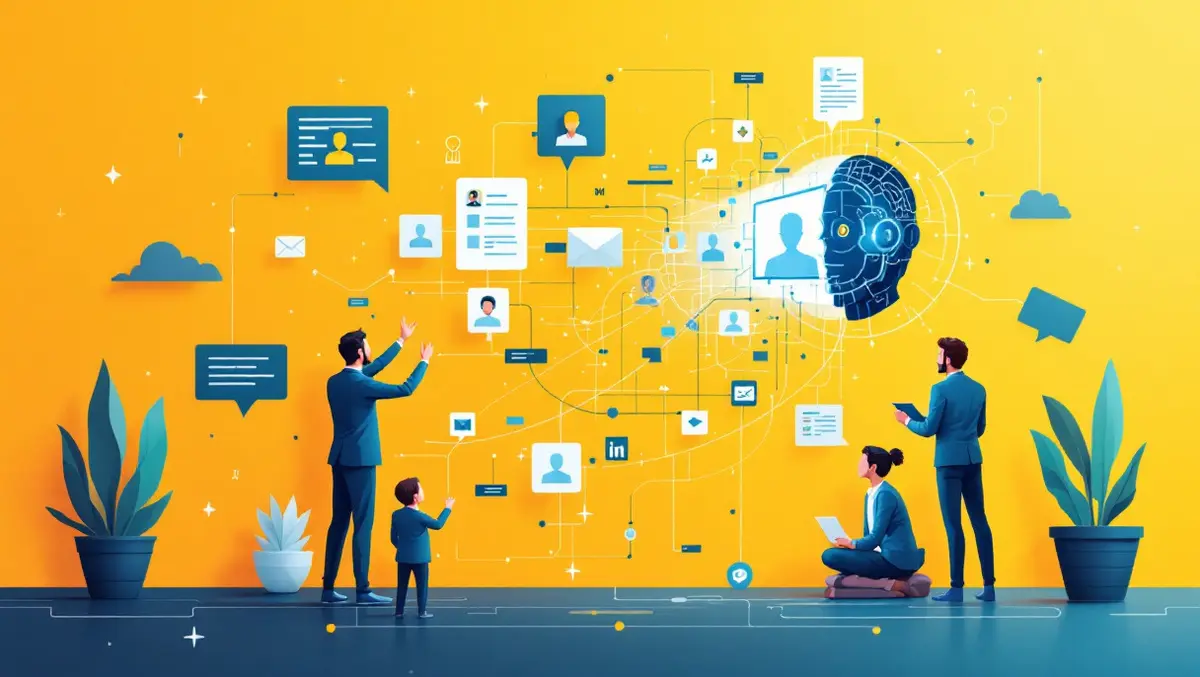
Recruiters urged to integrate AI as job applications surge 42%
The recruitment sector is seeing an increase in job applications and exploring artificial intelligence (AI) as a means to improve efficiency and maintain quality in hiring processes.
Joel Delmaire, Chief Product Officer at JobAdder, has stated that while recruiters continue to face the same core challenges, AI presents new opportunities to address them.
Delmaire explained that the integration of AI into established recruitment workflows remains a significant barrier to broader adoption, with transformative impacts yet to be realised fully.
"Seven years ago, traditional AI started dramatically improving part of the recruitment experience in fields like job search and job recommendations to job seekers. The next wave of GenerativeAI has the potential to be much more broadly applied, but we're yet to see the breakthrough use cases that will transform the industry." Delmaire said.
He continued, "GenAI has just passed its second anniversary."
"Despite heavy investment, it hasn't yet had a significant impact on the recruitment industry. Rather than real transformations that will redefine workflows, we're seeing smaller use cases such as improving speed. However, I anticipate the next couple of years will be pivotal for uncovering GenAI's most effective applications in recruitment."
Job applications have risen by 42% year on year, placing significant demands on recruitment teams to find new ways of improving processes without losing attention to detail. Delmaire indicates that JobAdder is identifying practical scenarios where AI can be implemented without disrupting existing recruitment practices.
For recruiters looking to harness AI efficiently, Delmaire has outlined five approaches to consider for 2025. The first involves the automation of administrative tasks.
According to Delmaire, "Many repetitive tasks for recruiters, such as candidate skills extraction and summaries, or comparing CVs to job descriptions, can be enhanced with AI. For example, with applicant tracking systems (ATS), recruiters can automate the screening of applications and do AI and skills-matching searches for applications they've received and on existing candidates in their database."
"While some of these capabilities have existed for years, GenAI's ability to make sense of unstructured, ambiguous data and seamlessly adapt to the context of each task has made it even more efficient. Through automating repetitive tasks, recruiters have more time to focus on strategic activities such as candidate engagement and relationship building."
The second recommendation is for AI to support the development and refinement of job advertisements. Delmaire stated, "AI can help recruiters write high-quality job advertisements, ensuring that all the right information is available for a job seeker to understand the role and make an informed decision about applying."
"This first draft can be a strong foundation for the recruiter to refine and tailor the message, ultimately saving time. However, human judgment must always be applied to avoid unexpected biases or errors."
The third suggestion urges recruiters to integrate AI into daily workflows rather than treating it as an isolated tool. Delmaire observed, "The uptake of AI in the recruitment industry has been slow, with few recruiters using it at scale. This could be due to the challenges of integrating AI into existing workspaces. Recruiters have to input a lot of information that already exists in their systems, stepping outside their platform to do a task."
"It's not that the capabilities of GenAI aren't there; it's just that they're not integrated into the flow and aren't convenient today, which creates a lot of friction in adoption. I think that will change significantly over the next couple of years as software companies learn how to integrate it into the workflow. For now, recruiters can try to reduce this friction by having clear and detailed templated actions for repetitive tasks."
Training is also deemed crucial. Delmaire commented, "Organisations that invest in team training on AI proficiency will gain a competitive edge."
"There's a strong correlation between companies that excel at using AI and those that provide formal training and implement systematic initiatives within their organisation. At JobAdder, we provide significant training to our development team, and we're looking at company-wide initiatives, like hackathons, to explore how to best use AI across the organisation. Recruiters who upskill themselves in AI technologies now will be well-positioned to take advantage of future advancements."
The fifth point underlines the importance of focusing on recruitment-specific problems when leveraging AI.
"Understanding the unique challenges of recruiters and identifying where AI can assist will be key. Some problems that couldn't be solved with more traditional technology could almost magically be solved by GenAI now. Recruiters should identify their biggest pain points and experiment with AI-driven solutions to determine where the technology can provide the most impact."
Delmaire also noted the likely gradual progress of AI in recruitment over the next few years, asserting, "The same but simpler and faster."
He highlighted ongoing areas of focus at JobAdder: "At JobAdder, we're particularly focused on AI use cases where recruiters have to understand or generate large volumes of unstructured data, such as understanding a large number of resumes, summarising candidate profiles and writing job advertisements."
"These are all areas where AI can make a tangible difference today."
The full impact of AI in recruitment is still unfolding, but those who develop their skills and integrate AI now could be better equipped for forthcoming industry changes.
